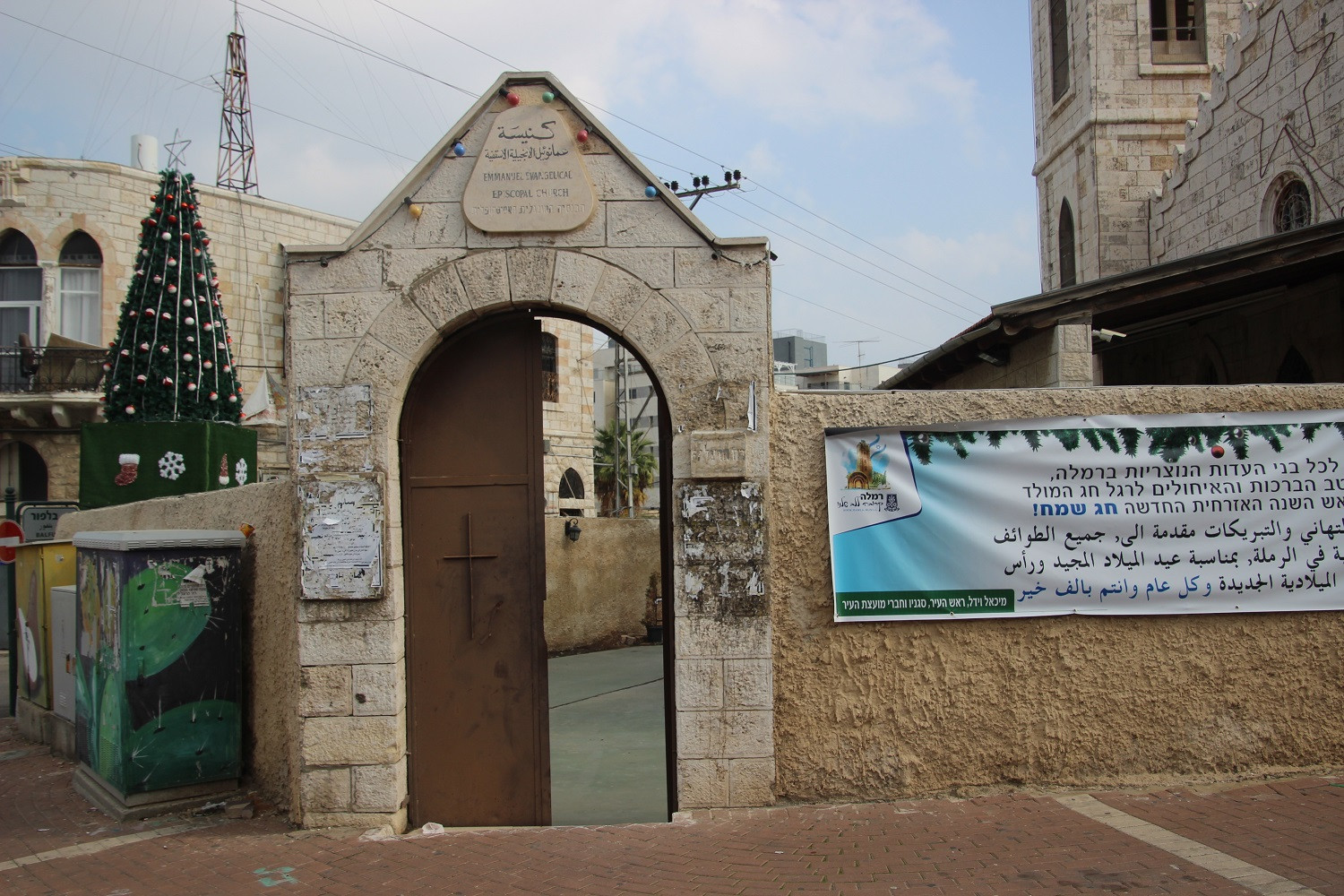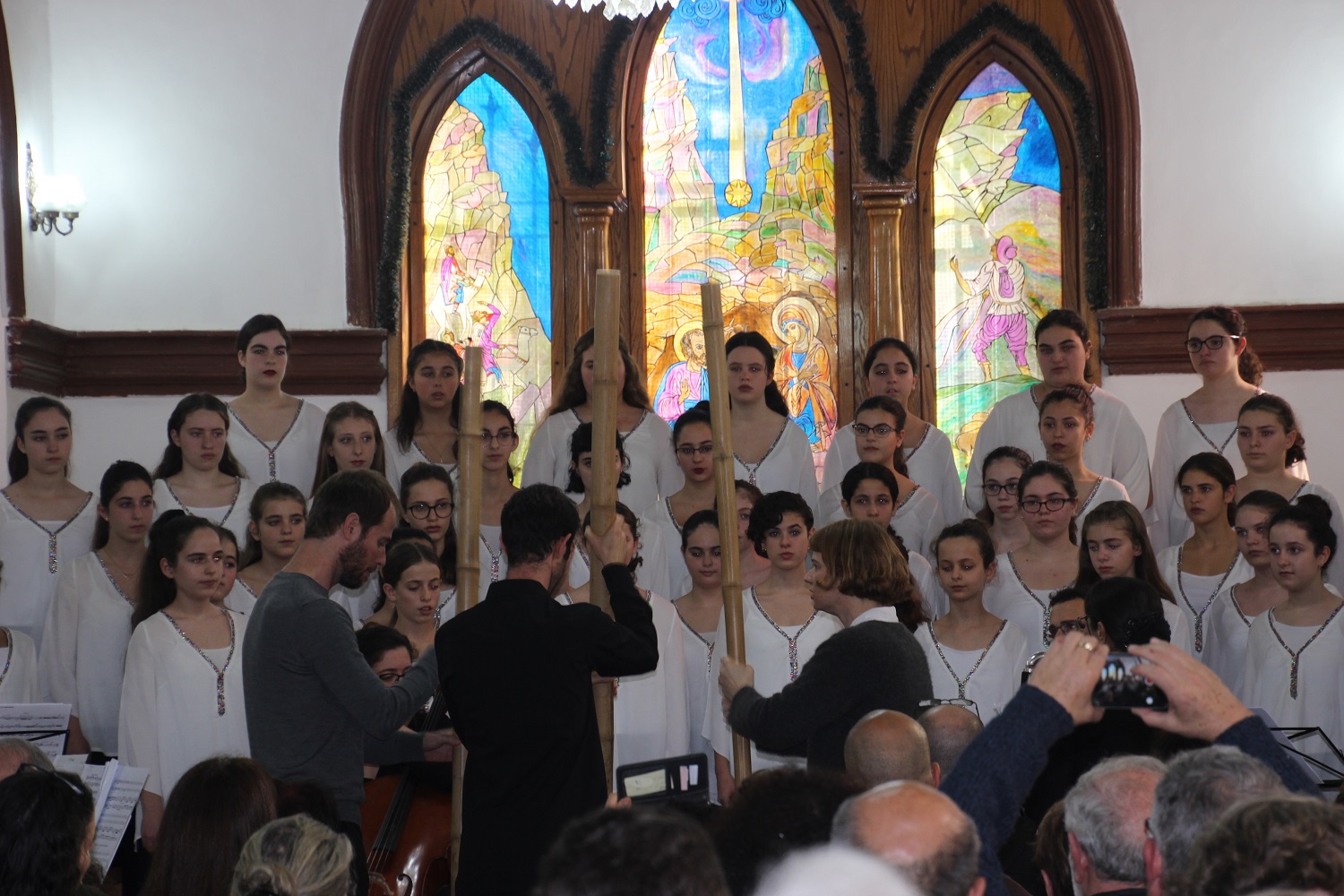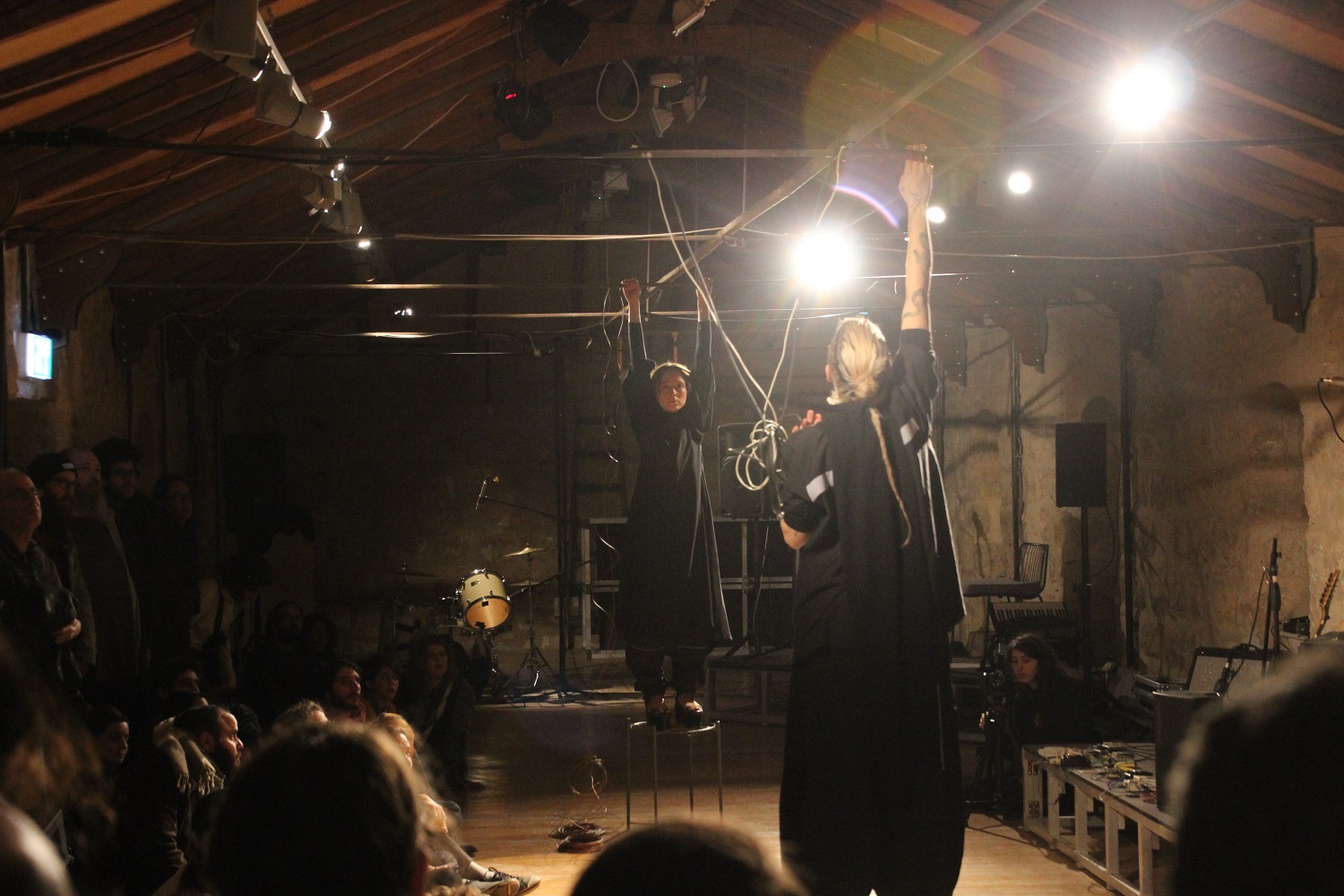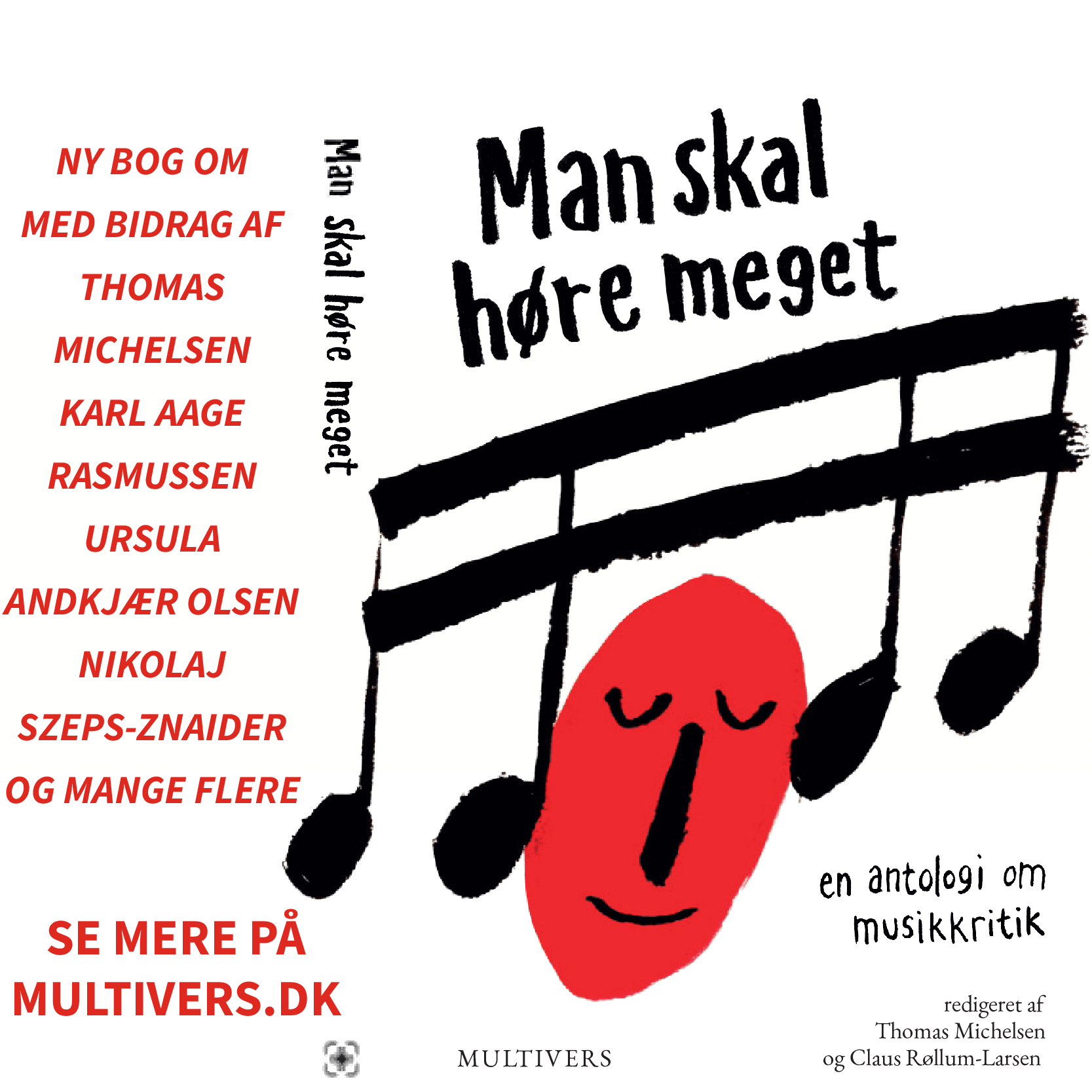
Heterotopias
This past winter, I visited home – Israel – after having lived in Berlin for the last seven years, with the intention of exploring the local contemporary music scene. I was immediately confronted by the constant presence of the everyday political reality and its influence on this discourse.
Five days before my arrival, a video featuring sixteen-year-old Palestinian activist Ahed Tamimi confronting two Israeli soldiers and her subsequent arrest went viral first on social media and then through local and international press. During the course of my stay, a plan to expel 38,000 Eritrean and Sudanese asylum seekers was approved by the Israeli government stirring a deep sense of desperation and urgency among those opposing the right-wing government.
As for public funding, the current Minister of Culture Miri Regev has a long record of incendiary remarks. She initiated the Loyalty in Culture initiative, a bill that would make ‘support for a cultural institution contingent on its loyalty to the state of Israel’. Regardless of whether her initiatives come to pass, Regev has clearly succeeded in shaping the cultural discourse, starting what many have referred to as the new ‘culture wars’.
So how does it feel to be a composer, performer or an artist working within this context? Does it influence the artwork? Is art-making in such complex and tense surroundings a utopian endeavor?
‘First there are the utopias. Utopias are sites with no real place. They are sites that have a general relation of direct or inverted analogy with the real space of Society. They present society itself in a perfected form, or else society turned upside down, but in any case these utopias are fundamentally unreal spaces.’ (M. Foucault, ‘Of Other Spaces: Utopias and Heterotopias’)
This is what happens when you play with electricity
In an underground floor of an office building in Jaffa, just opposite the Golden Fish, a disco club for the elderly, you will find HaTeiva, one of the main venues for contemporary music in Israel.
This is what happens when you play with electricity is a concert series curated by composer and sound artist Hadas Pe’ery. The series started in 2016 with the purpose of introducing new audiences to experimental, electro-acoustic music. Three annual concerts present pieces for acoustic and electronic instruments, objects, unconventional sounds and anything that makes noise. From a curatorial perspective, the series intends to promote the work of female and non-gender binary composers while providing an opportunity for young composers/performers to showcase their work. Pe’ery returned to Tel Aviv just a couple of years ago after a long period of studies in the United States, Paris and most recently in Berlin. Asked about how moving to Tel Aviv has influenced her work, she explains:
‘My creative practice always changes in respect to the scene in which I work. In Tel Aviv, it was important for me to create and curate works that make use of interactive electronics not usually heard or seen in Israel. [...] The lack of institutional support has both advantages and disadvantages. On the one hand, I find myself doing much of the administrative and logistical work involved in producing a concert or a new composition. I must also limit the technical complexity of my projects with electronics. On the other hand, I have immense artistic freedom in Israel. Throughout my work with large institutions in Europe (IRCAM in Paris, Akademie der Künste in Berlin, for example), I was often faced with strict aesthetic limitations set by the institutions, which led to great artistic compromises on my part. There was no room for discussion, as I received considerable funding and technical support from the institutions. Despite the difficulties in Tel Aviv, I prefer to deal with technical/financial restrictions, rather than artistic compromises.’
 Illi Adato, electronics; Adaya Godlevsky, harp; Yiftach Kadan, guitar. © Maya Shenfeld
Illi Adato, electronics; Adaya Godlevsky, harp; Yiftach Kadan, guitar. © Maya Shenfeld
Jewish music? Israeli music?
Earlier that day I met up with Ruben Saroussi, composer and head of the composition department of the Buchman Mehta School of Music. In this role, Sarroussi initiated a close and ongoing collaboration between performers and composers, and is actively fostering a closer connection to the European scene.
Saroussi immigrated to Israel in 1974 from Uruguay. On his arrival, continuing his composition studies in Israel, he encountered a conservative and isolated creative environment. Talking about his experiences and impressions during the 70s, Saroussi recalled a very traditional approach in Tel Aviv. Counterpoint, instrumentation, harmony and voice leading were taught not as a means of developing a compositional language, but as purely technical tools in which to excel. Rarely would one initiate interdisciplinary projects or speak of influences from other mediums such as literature or visual arts. The generation of composers leading the scene during the 70s was preoccupied with questions of Jewish, Israeli or Zionist identity and ways of representing those traditions in their music.
Saroussi continues: ‘Today, there is still a certain obsession with the question of Jewish/Israeli identity. People are still talking about the mix of Eastern and Western cultures, things that were talked about in the 1970s. I personally am opposed to this idea of defining and tagging things as Israeli, or Jewish. Previous generations of composers took it upon themselves to prove a Jewish or Israeli identity through their music, to legitimise their work and life in Israel; this ideological value seems to me a means of escape. This is a real testimony to the lack of artistic freedom in Israeli society. Artistic freedom means that every artist has the right to express whatever they choose to, the craziest, provocative, personal. A society that isn’t strong enough to accept that has no freedom. If a society needs the artwork to answer questions such as “what is Israeli about the work? is this Jewish?”, it turns into a very narrow-minded place.’
By contrast, over the past decade the local scene has experienced a revival, in large part thanks to Saroussi’s efforts. New ensembles, venues and concerts for new music have emerged, and graduate programs in contemporary music performance and European ensembles offering internships in contemporary music have become common phenomena. Many graduates of these programs are now leading the new music community.
Between fences
With a subtle and kind sense of humour, Avi Mograbi’s latest film Between Fences tells the story of thousands of Eritrean and Sudanese refugees detained at Israel’s Holot facility. Situated on the border between Egypt and Israel, it houses asylum seekers who have been denied legal residency status.
The film depicts a theatre workshop led by Chen Alon and Mograbi, in which residents of Holot and Israeli activists reenact personal stories of the asylum-seekers’ escape, daily life at Holot, and the dynamics between Israelis and refugees. The film touches upon relevant and urgent topics, not just in the Middle East but also internationally, in the most humane way.
The film’s soundtrack was composed by Noam Inbar – composer, singer and member of the political rock band Habiluim. In his works, Inbar brings together fringe theatre, performance, sound art and music composition. Always delivering a strong political message, while not taking himself too seriously, his work has become one of the prominent and most inspiring voices of his generation.
Ramla
During my visit Ensemble Meitar – one of the most prominent contemporary music ensembles currently active in Israel – was hosting CEME, week-long masterclasses and a festival. I visited the ensemble’s concert in the Evangelical Church Ramla, curious to hear Maya Dunietz’s Chai Shirim (Eighteen Songs) for ensemble and girls’ choir, but even more so I was curious to visit Ramla.
Ramla, which means sand in Arabic, was the first Arab town founded in Palestine shortly after the Muslim invasion in the 8th century. It was a thriving Arab town until the 1948 war – known in Israel as the ‘War of Independence’, and among Palestinians as the Nakba – at which point most of the Arab population fled or was expelled by the Israeli military forces. But a small minority remained and to this day lives in the Arab quarter. Ruins of an old, large mosque and the remains of a Crusader underground tunnel still exist in the old part of the city. The sold-out concert began with traditional vocal music; as the members of the Meitar Ensemble finally entered the stage for Chai Shirim, the atmosphere shifted towards a lighter tone.
Dunietz’s compositions filled the room with a myriad harmonies and rhythms influenced by Middle Eastern music. Chai Shirim is based on a selection of poems in Arabic. In the process of creating this piece, Dunietz recorded the poets reading their works and selected sections for the libretto according to sonority and rhythm. The recordings served as a melodic starting point for the compositions turning into twelve half-tone melodies, their essence most present in the rhythm and intonation.
 Ensemble Meitar, Maya Dunietz and the Bat Kol Choir at the Evangelical Church Ramla. © Maya Shenfeld
Ensemble Meitar, Maya Dunietz and the Bat Kol Choir at the Evangelical Church Ramla. © Maya Shenfeld
Azalzel
There is a long-time rivalry between Tel Aviv and Jerusalem, the two cities being diametrically opposed to one another. These days I’m often asked about Tel Aviv in Europe – the city made a name for itself as a cool, cosmopolitan city, with a great party scene, terrific food and the obligatory beach. Anywhere and nowhere: the bubble, as it is known in local parlance. Born and raised in Jerusalem myself, I can’t help but side with my home town. The city’s old quarters, religious and Arab neighbourhoods are inevitably tense, but also more interesting to explore, always with something new to discover. As for the community, Jerusalem is still the hometown of international intellectuals, writers and composers attracted, maybe, by its peculiarity.
‘Azalzel’ was an evening of performances curated by the Sala-Manca artist group at Bet Hansen. The historic compound was built in 1887 by a German missionary as a care center for patients with leprosy. The last patients left the hospital in 2000, and it recently reopened as an art exhibition space.
The instrumental guitar and drums post-math-rock duo Suicidal Furniture opened the concert, followed by a sound-performance by Tomer Damski and Dana Takach. The two stood on chairs clinging and hanging onto a rusty tube structure connected to the ceiling. As the performance began they started rattling the tubes which were amplified by contact microphones – for a while it wasn’t clear if they were holding on to the bare supporting structure of the ceiling. The sounds were subtle, but with time evolved in sync with the movements of Damski and Takach. Little by little the performance became dramatic turning into a saga which ended with the performers shoving the microphones and cables into their mouths.
The American-born artist Pesach Slabosky’s performance for tape (played on cell phones amplified by metal bowls) and saw playing and vocals was one of the most original performances that evening. I hear he has been around for a while, a local legend I was told. Slabosky opened his set playing and bending his saw, tuning the pitches to a recording of what might have been a piece by Vivaldi. As the set evolved, the recording drifted into samples of American radio conversations, on top of which Slabosky, while playing the saw, began singing a love ballad in a high, squeaky voice.
The eclectic nature of the performances and the fact that they weren’t tailored to suit a theme or a specific genre turned the edgy evening as a whole into an inspiring one.
 Tomer Damski and Dana Takach performing at ‘Azalzel’. © Maya Shenfeld
Tomer Damski and Dana Takach performing at ‘Azalzel’. © Maya Shenfeld
Heterotopias
Settling into a daily routine in Tel Aviv, I once again remembered how the mediated image of Israel is different from the actual reality. The ‘situation’ (as referred to in local jargon) isn’t quite as black and white as it might seem to be. It is a small place and a small scene, regardless of what genre you are interested in; people know each other and are keen to collaborate, exchange and support each other’s work. Despite – or maybe because of – the lack of institutional support, there is a constant forming of projects and small communities gathered around shared values and aspirations.
‘Azalzel’, Dunietz’s work, Hateiva, and the conversations I had revealed an open and diverse scene. A community which tries its best to self reflect, to be critical towards its role and place within the cultural and geographical context. Granted, these are merely pockets of resistance, initiatives fighting for a relative autonomy within a larger ever-present and overbearing political reality. But they are also real spaces of alterity. As Foucault describes: ‘There are also, probably in every culture, in every civilization, real places – places that do exist and that are formed in the very founding of society – which are something like counter-sites, a kind of effectively enacted utopia in which the real sites, all the other real sites that can be found within the culture, are simultaneously represented, contested, and inverted. Places of this kind are outside of all places, even though it may be possible to indicate their location in reality. Because these places are absolutely different from all the sites that they reflect and speak about, I shall call them, by way of contrast to utopias, heterotopias.’
I would like to thank my colleagues and friends for taking the time to exchange ideas and for the inspiring conversations: Hadas Pe’ery, Maayan Tsadka, Ruben Saroussi, Ilan Volkov, Boaz and Gabriel Levin.
